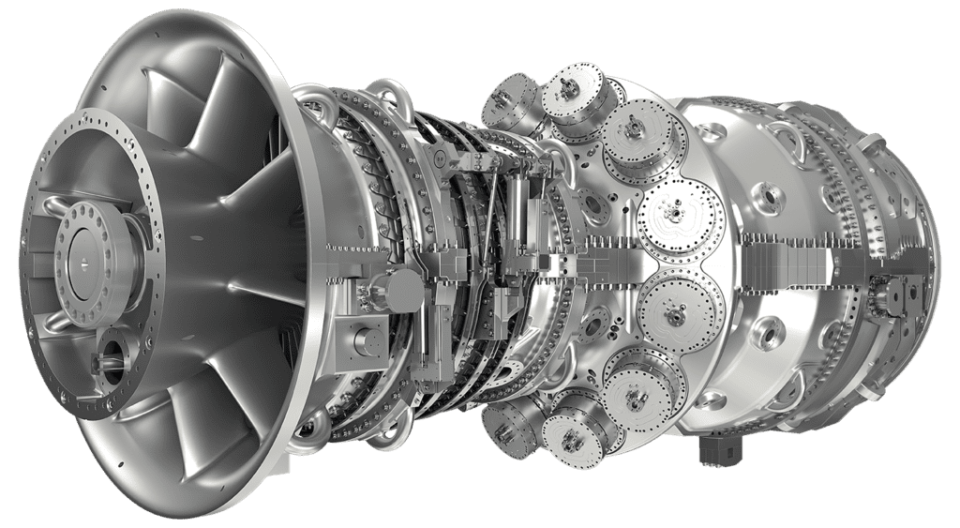Siemens Energy, GE Vernova Each Will Build Two, 2-GW Gas-Fired Power Stations in Saudi Arabia
Siemens Energy and GE Vernova each announced the companies would support construction of large combined-cycle power plants in Saudi Arabia as part of that country's plan to increase its supply of electricity to support a growing population. The gas-fired facilities—Taiba 1 and 2, and Qassim 1 and 2—will be built in the western and central regions of Saudi Arabia over the next few years. GE Vernova on June 24 said it would build the Taiba 1 and Qassim 1 power plants, with Siemens Energy supporting construction of Taiba 2 and Qassim 2. The facilities are each designed to generate about 1.9 GW to 2 GW of electricity. GE Vernova said it had secured an order for six 7HA.03 gas turbines and two 7E.03 gas turbines from the engineering, procurement, and construction (EPC) company SEPCOIII Electric Power Construction for Taiba 1, located in western Saudi Arabia about 60 miles southeast of Madinah city. Qassim 1 is sited in the central region about 20 miles southeast of Buraydah city. GE Vernova said its 7HA.03 gas turbines currently have the capability to burn up to 50% by volume of hydrogen when blended with natural gas. [caption id="attachment_220283" align="alignnone" width="640"]

This is a rendering of GE Vernova's 7HA.03 gas turbine, which is capable of running on a blend of natural gas and 50% hydrogen. Source: GE Vernova[/caption] "The development of Taiba 1 and Qassim 1 plants is a very ambitious project, and we are proud to support it," said a spokesperson for SEPCOIII. "We are also excited to work with GE Vernova to evaluate how carbon capture solutions could potentially be integrated with these gas power plants to help lower emissions. We expect to see increased longer term demand for gas plants integrated with carbon capture technologies, which is key to reducing emissions from fossil fuels and helping fight climate change." In addition to the equipment order, GE Vernova on Monday also announced it had signed a 21-year service agreement to support plant operations with Riyadh-headquartered ACWA Power's wholly owned subsidiary, National Operations & Maintenance Company (NOMAC).
'New Chapter" for Saudi Gas-Fired Power
"This project, which marks our largest single order for 7HA.03 gas turbines to date in the region, is expected to open up a new chapter for gas power generation in Saudi Arabia," said Joseph Anis, president and CEO of GE Vernova's Gas Power business in Europe, the Middle East, and Africa. "As an innovation leader in the path towards decarbonization, we are proud of developing our first 7HA.03 project at GESAT and boosting the localization of the gas turbines industry in Saudi Arabia, in alignment with the kingdom’s goals for more diversified and sustainable economic growth. We are delighted to team with SEPCOIII and ACWA Power's NOMAC to deploy our most advanced power generation technologies, services, and proven expertise in natural gas combined cycle plant engineering, operability, and plant integration, to support the transition to a lower-carbon energy future." "We have developed a productive and successful role-model relationship with GE Vernova that will enable our collective organizations to deliver meaningful innovation and energy contributions to the Kingdom of Saudi Arabia," said Marco Arcelli, ACWA Power CEO. "With today's signing of this contract, we mark not only a milestone in our cooperation but pave the way to future collaborations for the safer, more reliable, and more sustainable production of electricity in the kingdom."
Siemens HL-Class Turbines
Taiba 2 and Qassim 2 will feature Siemens' HL-class turbines, in combination with steam turbines and generators. China Energy International Group will serve as the EPC and contracting partner for the Siemens projects. [caption id="attachment_220267" align="alignnone" width="640"]

A Siemens Energy HL-class gas turbine is shown being prepared for shipping from the company's factory in Berlin, Germany. Source: Siemens Energy[/caption] "Saudi Arabia is driving forward its vision 2030 to transform the kingdom into a pioneering economic location," said Karim Amin, member of the managing board of Siemens Energy, and responsible for the business area of the group's Gas Services. "The new gas-fired power plants will provide reliable energy supply and contribute to the sustainable and future-oriented development of the country. Our Siemens Energy local service hub in Dammam will make an important contribution in expanding and localizing technology and competencies in the kingdom." Saudi Arabia has a goal to reach net-zero emissions of carbon by 2060 by expanding its use of modern and efficient gas-fired power plants, in combination with carbon capture and storage. The gas-fired power stations will help replace part of Saudi Arabia's fleet of older, oil-fired generation facilities. Siemens Energy on Monday said the new plants will reduce emissions of carbon dioxide by as much as 60% compared with oil-fueled power plants. Siemens Energy also has entered into a 25-year maintenance contract for its two power plants. The company said the total value of the contract is about $1.5 billion. Officials said Taiba 2 and Qassim 2 will initially be connected to the grid in simple-cycle mode in 2026, and will transition to combined-cycle operation in 2027. —Darrell Proctor is a senior associate editor for POWER (@POWERmagazine).

 Yahoo Finance
Yahoo Finance 